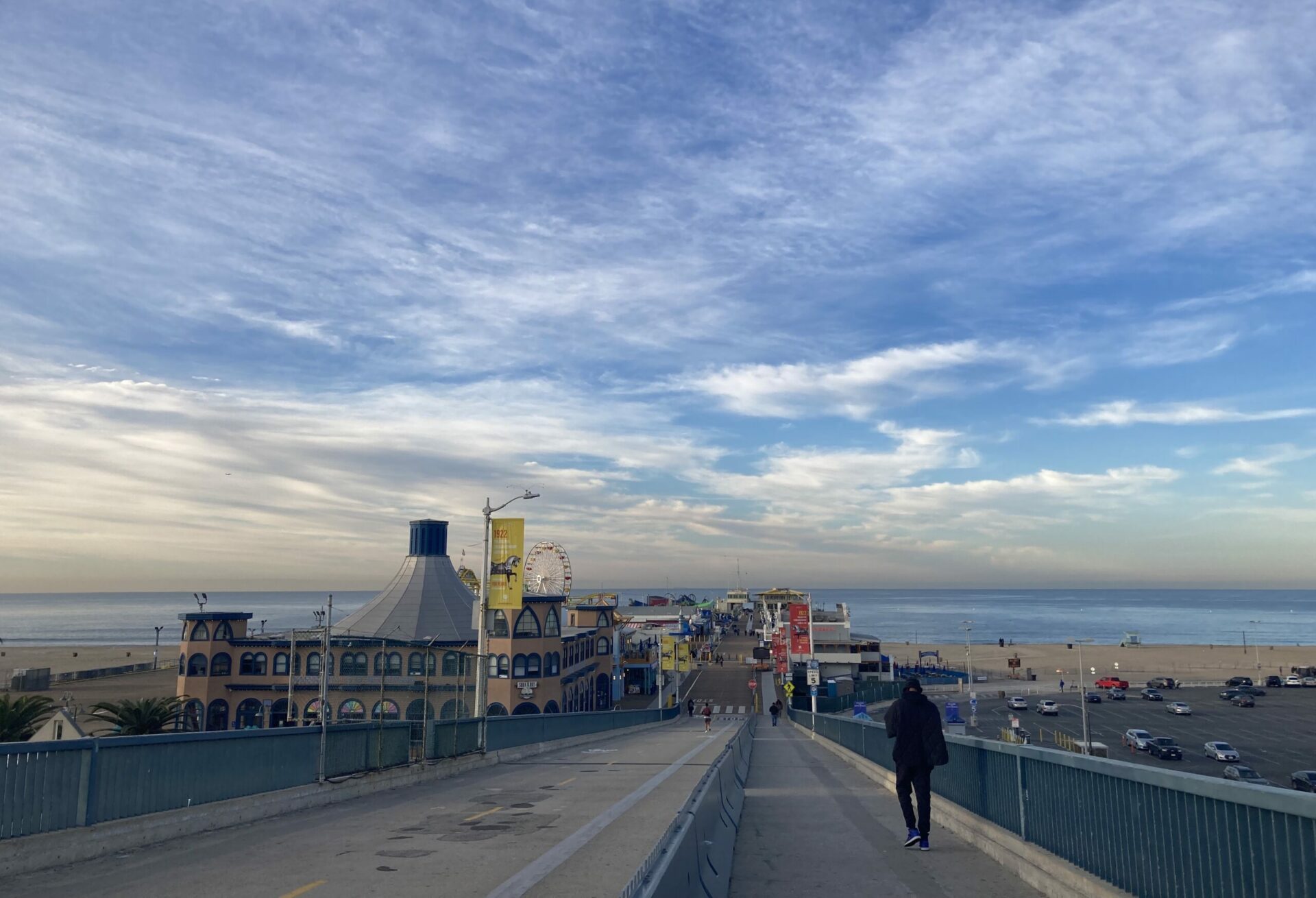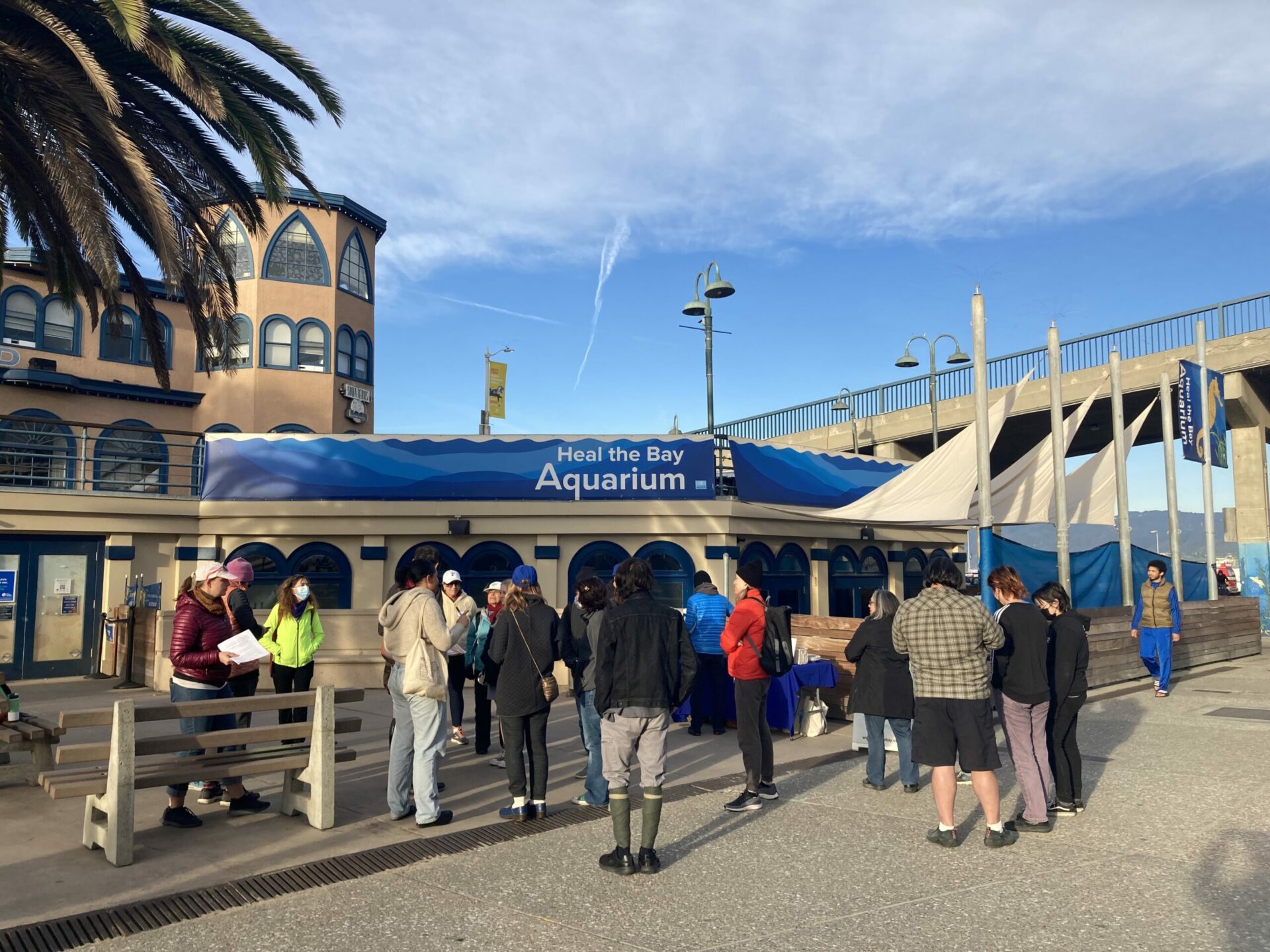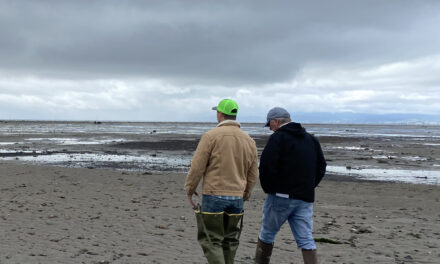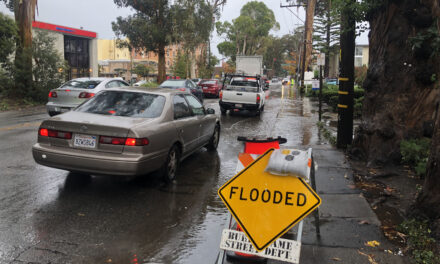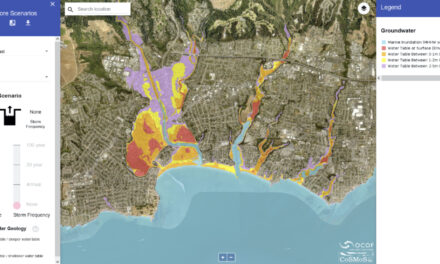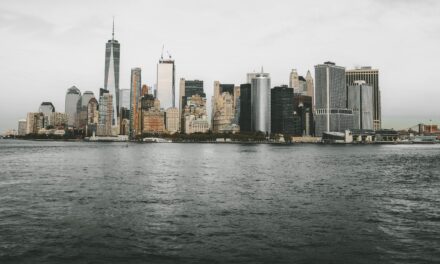Bittersweet Beach Outing to See King Tide
On a sunny, clear Saturday morning in January, a group of tide worshippers gathered in front of Heal the Bay Aquarium at the Santa Monica Pier dressed in their L.A. winter finest (although some younger attendees were inexplicably wearing shorts and flipflops).
“We’re here to celebrate the ocean and each other — and to build our climate community,” said Laurene von Klan, executive director of Climate Action Santa Monica, which joined Heal the Bay in organizing the January 2023 event.
Photo: Maylin Tu.
I built climate community with Ingrid, an attendee who said she often walks the beach, taking photos of “accidental art”: shells, driftwood and other ephemera that wash ashore. There we were, a ragtag group of youth activists, volunteers, accidental artists, citizen scientists and the climate curious.
I count myself as the latter. I learned that the King Tides are the most extreme tides of the year — although as the National Ocean Service notes, “King Tides” is not a scientific term. When the sun, moon and earth line up just-so, the compounding gravitational force creates the highest of high tides and the lowest of low tides.
Every year, the California Coastal Commission organizes the California King Tides Project, inviting participants to take pictures along the coastline. Scientists from the commission use photos uploaded to the project’s website to model what coastal infrastructure will look like in the future. Today’s highest tide is tomorrow’s new normal.
“With the climate crisis, we are seeing rising sea levels,” said Annelisa Moe, water quality scientist with Heal the Bay. “And even if we do mitigation, there’s going to be at least two to three feet of sea level rise by the end of the century.”
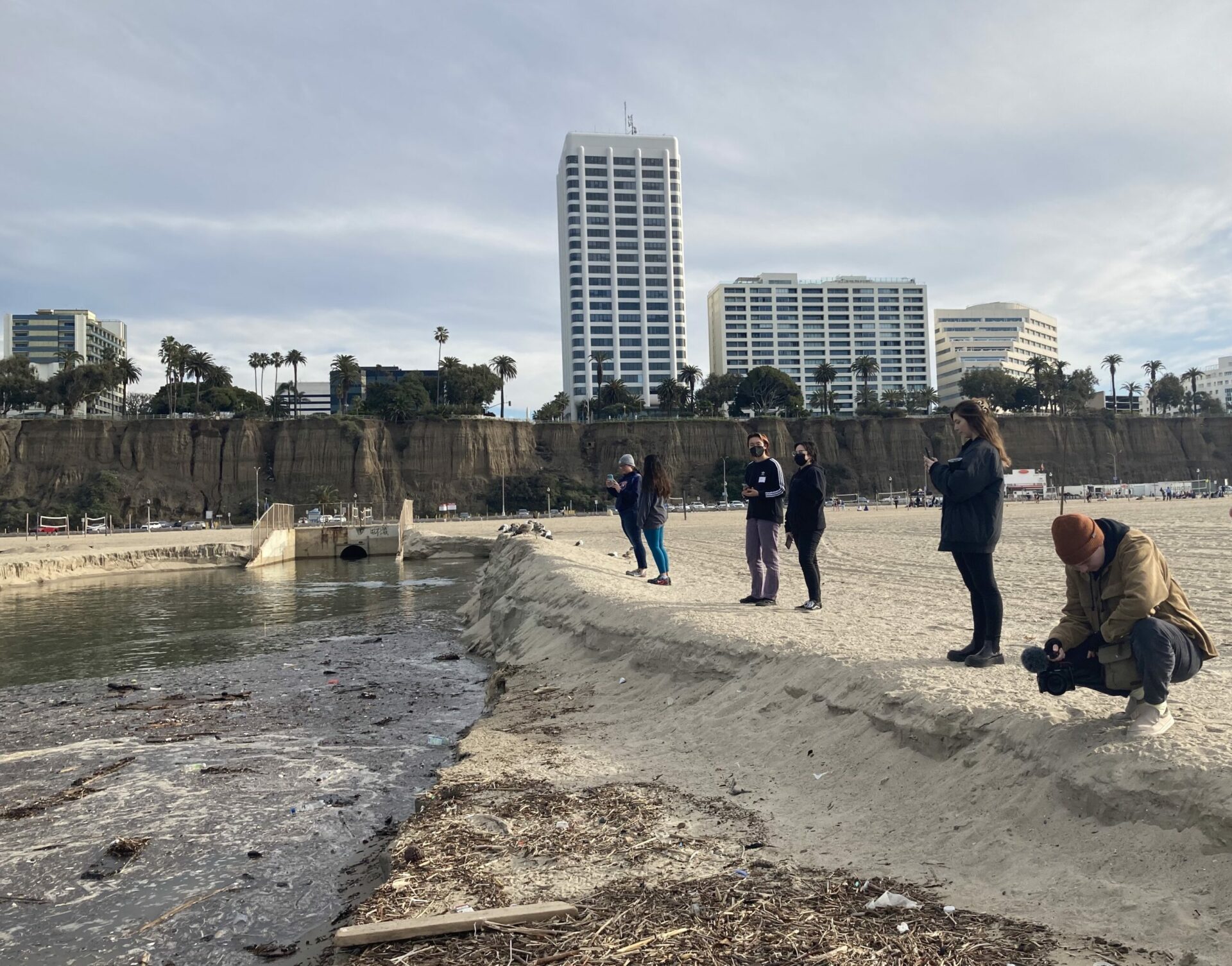
Stormdrain. Photo: Maylin Tu.
If Moe had one magical wish as a scientist, it would be that we capture stormwater before it reaches the ocean. Currently, stormwater is the largest source of pollution in Santa Monica Bay, she explained.
This year, one King Tide happened in Santa Monica on January 22 at 8:57 a.m. Citizen scientists fanned out across the beach and took photos at both the pier and two storm drains to the north and south. The storm drain to the north normally trickles L.A. runoff downstream into the bay, but today the inlet was full of swirling seawater and small pieces of debris.
Honestly, I had expected big waves and wild surf — but the ocean was calm and the waves gentle. With the sunny weather and wide expanse of beach, it felt like just another lovely day in Santa Monica.
But it won’t always be like this. When combined with storm surges, King Tides can bring towering waves, flooding and, poetically, jellyfish swimming in the streets.
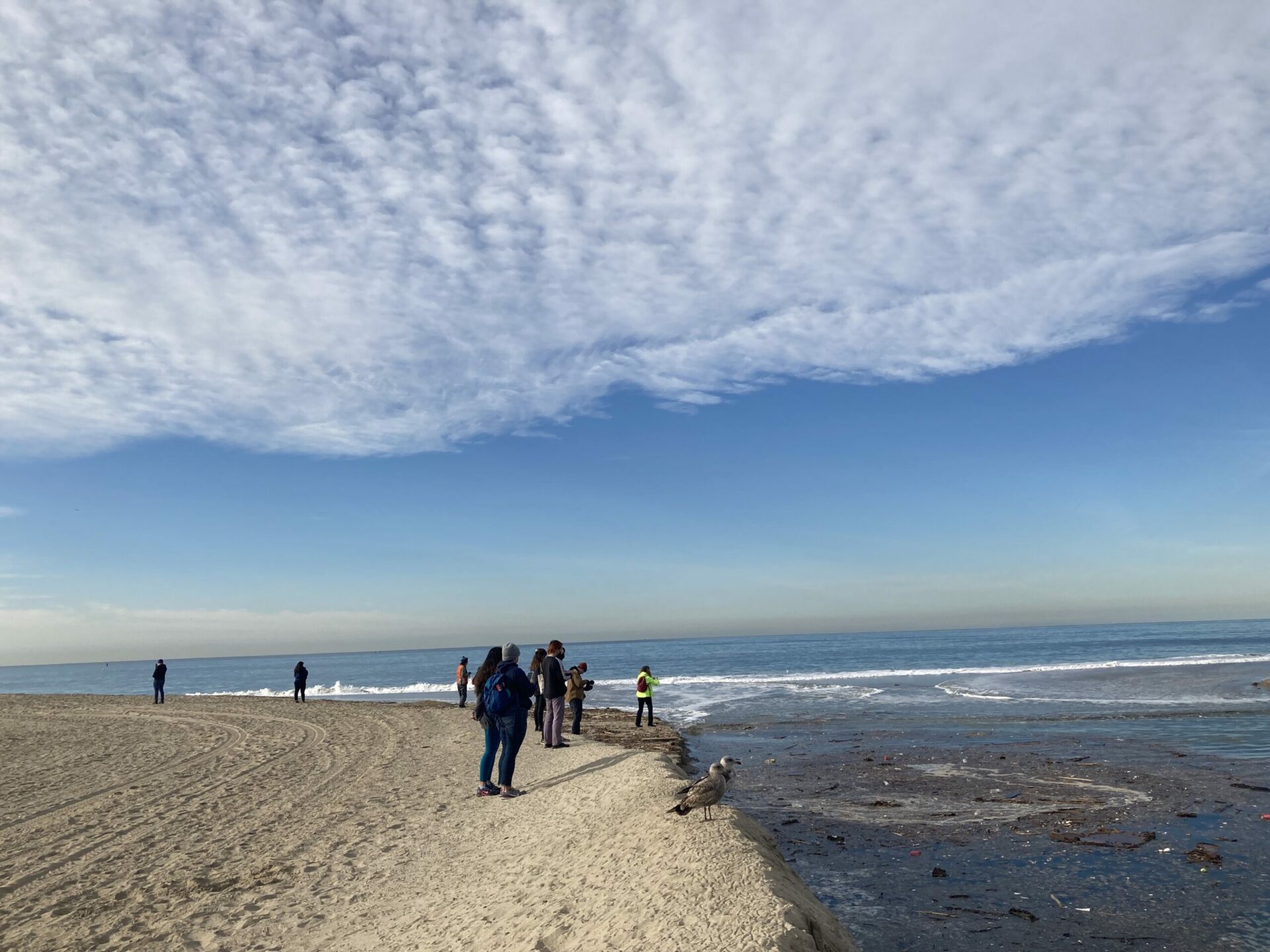
Photo: Maylin Tu.
What can the average person do about rising sea levels?
Take the bus or train instead of driving. Move closer to your friends. Volunteer with groups like Climate Action Santa Monica and Heal the Bay.
“What I’ve learned from indigenous folks in this area is that one easy thing that we can all do every single day is just give thanks for the resources that we have available to us, including water,” said Moe.
It’s true. Living in Los Angeles, I take all the beauty and sunshine and ocean views for granted. I removed several layers of clothing — the day had warmed — and walked up the pier, headed to dry land.






